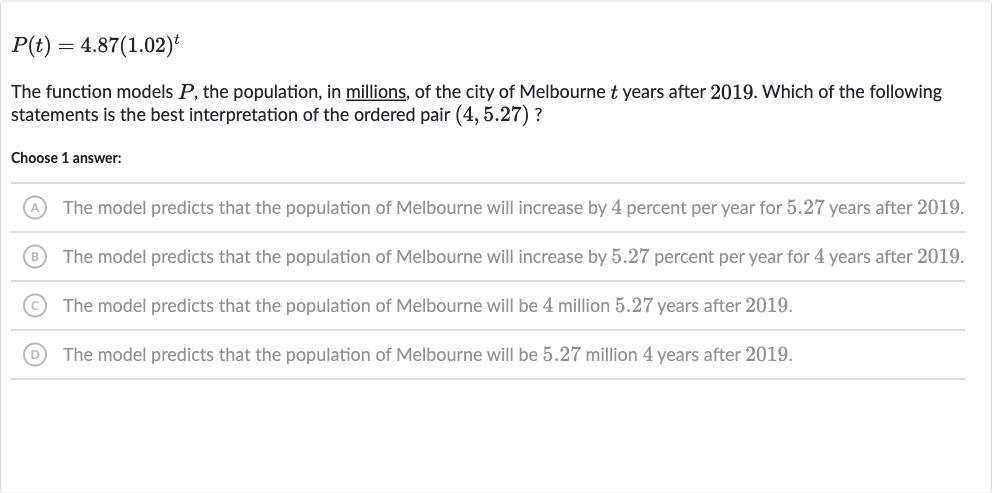AI tutor
Welcome to Bytelearn!
Let’s check out your problem:

The function models , the population, in millions, of the city of Melbourne years after . Which of the following statements is the best interpretation of the ordered pair ?Choose answer:(A) The model predicts that the population of Melbourne will increase by percent per year for . years after .(B) The model predicts that the population of Melbourne will increase by . percent per year for years after .(C) The model predicts that the population of Melbourne will be million . years after .(D) The model predicts that the population of Melbourne will be . million years after .
Full solution
Q. The function models , the population, in millions, of the city of Melbourne years after . Which of the following statements is the best interpretation of the ordered pair ?Choose answer:(A) The model predicts that the population of Melbourne will increase by percent per year for . years after .(B) The model predicts that the population of Melbourne will increase by . percent per year for years after .(C) The model predicts that the population of Melbourne will be million . years after .(D) The model predicts that the population of Melbourne will be . million years after .
- Plug in : Plug in into the function to see if equals .
- Calculate .: Calculate to the power of .
- Multiply .: Multiply by to find .
- Perform the multiplication: Perform the multiplication to find the value of .
- Compare with ordered pair: Compare the calculated value of with the second value in the ordered pair . The calculated is approximately , which matches the ordered pair.
- Interpret the ordered pair: Interpret the ordered pair based on the function . The ordered pair means that years after , the population of Melbourne is predicted to be million.
More problems from Solve quadratic equations: word problems
QuestionGet tutor help
QuestionGet tutor help
QuestionGet tutor help
QuestionGet tutor help
QuestionGet tutor help
QuestionGet tutor help
QuestionGet tutor help
QuestionGet tutor help
